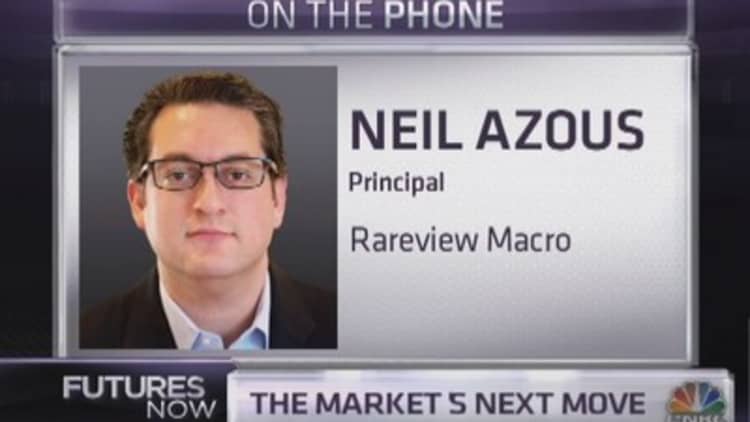
It's one of Wall Street's favorite aphorisms: "sell in May and go away." But is there any reason behind the rhyme?
The full "sell in May" rule is that investors should get out of stocks and into riskless Treasury bills before May Day, and get back into equities after Halloween. And unlike many Wall Street myths, the idea does have some strong grounding in the data.
Dividing the year in half, one does notice a divergence in performance between the November to April period ("the good half") and May to October ("the bad half"). Going back to May 1978, the S&P has risen an average of 1.3 percent each month in the "good half," but only 0.3 percent in the average "bad half" month. Even if one removes the heinous October 1987 from that May to October average, the S&P is still only looking at an average gain of 0.4 percent in that bad half.
For Mark Dow, an investor who writes at the Behavioral Macro blog, there is actually a good explanation for this.
"It's not true for any fundamental reason, but it really maps to our psychology and how risk budgets are set," Dow told CNBC.com. "At the beginning of the year, people tend to be more bullish just because you're putting money to work. Asset allocators are giving money to managers, and speculative juices naturally flow. And if the macro backdrop is decent, we continue to ramp it up. But at some point we take it too far, and all that enthusiasm unwinds and reverses. And that often happens to take place between May and July."
Read More Why it may not be smart to sell in May
Of course, it doesn't work every year. In 2013, the S&P 500 soared 10 percent from the end of April to the beginning of November. And with the economy just shaking off a tough winter, some experts predict that another boffo summer is ahead.
"The profile going into May is getting better, and if the job numbers in early May are supportive for the growth profile being repriced into the stock market, and investors are comfortable with an incremental measure higher in interest rates, people are going to be supportive of higher prices," said Neil Azous, managing member of Rareview Macro, on Thursday's episode of "Futures Now." "And the 'sell in May and go away' might have to wait a few weeks, or a couple of months."
Of course, some traders take the other side.
"I think it is actually setting up for a perfect 'sell in May and go away,'" said Brian Stutland of Equity Armor Investments. "I'm not sure the equity markets are set up to move significantly above 1,900 in the S&P. Earnings growth is flattening, and I think the market needs another quarter of earnings before it can push higher."
Still, whatever one's take on stocks right now, or on the broader "sell in May" phenomenon, intelligent investors should agree that blindly following the patterns of the past will generally make for poor returns.
"What usually happens with anomalies is that they happen for a while until enough people figure out how to do it, and you'd imagine that it would be the same here," said Richard Roll, distinguished professor of finance at the UCLA Anderson School of Management.
"If it were really true that stocks underperform T-bills from May to October, then a superior strategy would be to not buy stocks then, and leverage them up in other months," the professor said. "But if everybody did that, then stocks would go down, and you could buy early and have high returns. And we would lose that calendar irregularity."
Watch "Futures Now" Tuesdays and Thursdays at 1 p.m. ET exclusively on FuturesNow.CNBC.com!



